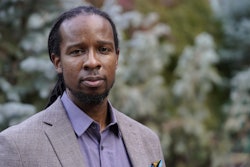Poor people in an area dubbed “Cancer Alley,” located between New Orleans and Baton Rouge, had no explanation three years ago for what was making them sick.
This 150-mile corridor in Louisiana is lined with petro-chemical plants and for years it was a zone of discomfort and fear as scores of cases of unexplained rashes and cancers infested the population.
Seeing a need for action, Xavier University, in 1992, created the Deep South Center for Environmental Justice. The center now serves low-income and minority communities in Louisiana, East Texas, Arkansas, Mississippi and Alabama.
Two more centers, funded by federal grants, have since opened at Clark Atlanta and Hampton universities.
“Often, communities do not have access to the scientific facts regarding the environmental problems they face, and without this information they are powerless,” said Dr. Beverly Wright, an Xavier sociologist and director of the New Orleans center.
“Education is the most powerful tool that we have to combat environmental racism,” she said. “By forging partnerships with universities, [communities] can be afforded access to the information and analysis they need.”
Harsh Words From Critics
But not everyone believes the centers and HBCUs are doing enough to help communities identify and combat environmental racism.
“On a scale of one to 10, I’d give Black universities a zero when it comes to working with our communities,” charged Gary Grant, who heads the Concerned Citizens of Tillary in Tillary, NC.
“White students and universities seek us out all the time and offer their assistance. Why can’t Black universities?”
Grant said his organization has written letters of support for North Carolina A&T State University to get an EPA grant to fund a center. But, he said, his group has not yet been notified whether A&T got the money and — if it did — what the institution plans to do with it.
Grant also charges that the university has taken no position on environmental pollution and the loss of Black-owned land caused by giant hog farms in eastern North Carolina, Grant said.
Late last year, hog farms spilled 25 million gallons of waste into streams which is blamed for severe groundwater contamination.
Dr. Robert Bullard, director of the Clark Atlanta center, concedes the relationship between Black universities and their communities is not perfect, but he added the problem is overblown.
“Many of these problems are caused because the expectations are so great,” Bullard said.
“People want us to work miracles because they have been so inundated with toxins. But we are limited in the resources and staff that we have.
“Ultimately we have to be cognizant of these problems and address them. Most African-Americans, no matter what their income, live in polluted communities,” Bullard said.
COPYRIGHT 1996 Cox, Matthews & Associates
COPYRIGHT 2004 Gale Group
© Copyright 2005 by DiverseEducation.com


















